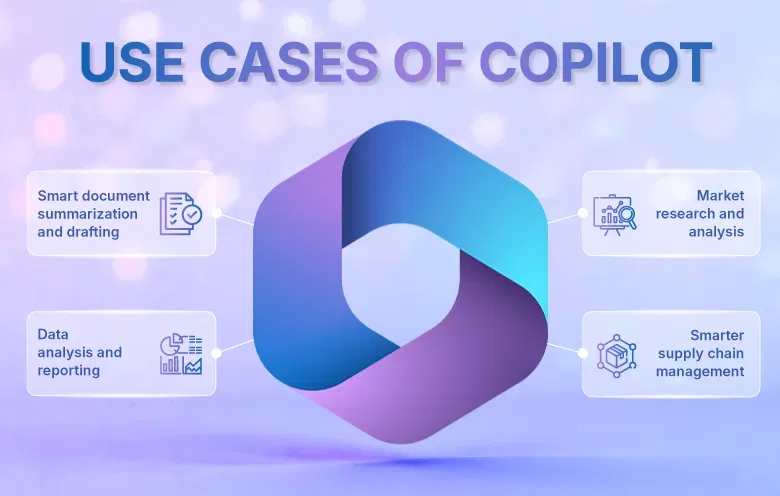Welcome to part 2 of our blog series on planning a successful Tenant-to-Tenant migration.
In this blog, we will delve into the crucial steps to execute, test and validate the migration. We will also discuss the ongoing support needed to ensure a smooth transition and maximize your new tenant benefits.
In Part 1 of this blog series, we discussed the importance of planning for a successful migration to a new Microsoft 365 tenant. The time has come to transcend borders and unlock new possibilities as you embark on a digital transformation journey. After carefully crafting your migration plan, it’s time to put it into action with each step forward, you can reshape your organization’s future, while empowering your workforce to drive unprecedented productivity.
In this pivotal second part of our blog series on Microsoft 365 tenant-to-tenant migration, we delve into the realm of execution—where dreams become reality and success take root. By migrating to M365, you can streamline operations and protect sensitive data.
Planning a successful migration
Before we dive into the execution phase of your Microsoft 365 tenant-to-tenant migration, let’s revisit the essential foundation of planning. Just as a sturdy architectural blueprint ensures a solid structure, a well-thought-out migration plan lays the groundwork for a smooth and successful transition. It is the compass that guides you through the intricate maze of complexities and challenges, enabling you to achieve your migration goals with confidence.
When preparing your migration plan, there are key considerations that demand your attention. Firstly, carefully assess your specific needs for migrating to a new tenant. What are the driving forces behind your decision? Are you seeking enhanced collaboration capabilities, improved security, or consolidation of multiple environments? Understanding your unique requirements will enable you to align your migration strategy with your desired outcomes.
Your budgetary allocation for the migration is equally important. Determine how much financial investment you are willing to make to ensure a seamless transition. By setting clear budget parameters, you can effectively evaluate migration options and make informed decisions that strike the right balance between cost and value.
Time is of the essence, and defining a realistic timeline for your migration is crucial. Consider your organizational priorities, upcoming projects and any regulatory or compliance requirements that may impact your migration timeline. By establishing a well-defined schedule, you can manage expectations and allocate resources efficiently, ensuring a smooth and timely migration process.
Speaking of resources, assess your in-house capabilities and expertise. Do you have the necessary knowledge and skilled personnel to execute the migration internally? Evaluating your resources will help you determine whether you can handle the migration independently or need external support.
Partnering with the right migration partner can help your migration succeed. When selecting a partner, keep these four key factors in mind:
1. Expertise and experience: Look for a migration partner with a proven track record of successfully executing tenant-to-tenant migrations. Their expertise and experience will provide valuable insights, best practices and guidance throughout the process.
2. Technical capabilities: Ensure that your chosen partner possesses the technical prowess and tools necessary to facilitate a seamless migration. They should be well-versed in handling complex data transfers, application migrations, and user provisioning.
3. Security and compliance: Data security is paramount, particularly during a migration. Your partner should have robust security measures in place to safeguard your sensitive information throughout the process. Additionally, they should be well-versed in compliance requirements to ensure adherence to regulatory standards.
4. Support and communication: Effective communication and support are essential components of a successful migration partnership. Choose a partner who provides clear communication channels, proactive updates and responsive support. This will address any concerns or issues during the migration process.
Key factors of executing a successful migration
Once you have a solid migration plan in place, it’s time to execute it effectively. Here are some essential considerations to remember during the execution phase:
1. Communication: Maintaining open lines of communication with your users is crucial throughout the migration process. Keep them informed about the progress, expected timeline and any potential disruptions that might occur. By proactively addressing their concerns, you can minimize productivity and ensure a smooth transition.
2. Monitoring: Monitor the migration process closely to identify any potential issues or bottlenecks. Regularly assess progress, track data transfer and evaluate system performance. By closely monitoring the migration, you can proactively address any challenges that arise and take corrective action promptly.
3. Testing: Thoroughly test your migration plan to ensure its effectiveness and minimize data loss or application issues. Validate the accuracy and completeness of data migration, ensuring that all critical files and information are transferred successfully. Conduct comprehensive testing of applications to verify their functionality and compatibility with the new tenant environment.
4. Downtime: Minimizing downtime during migration is crucial to business continuity. Collaborate with the right migration partner who can implement best practices to reduce downtime and ensure a seamless transition. Consider leveraging techniques like incremental data migration, prioritizing essential applications and employing backup and restore strategies to mitigate potential disruptions.
Testing and validating a successful migration
After completing the migration process, it is crucial to validate the results to ensure a successful transition. Here are key areas to focus on during the testing and validation phase:
1. Data: Verify that all your data has been migrated correctly and securely to the new tenant. Perform data integrity checks, comparing source and destination data to ensure consistency. Validate the accessibility, organization and permissions of files and folders to guarantee a seamless user experience.
2. Applications: Ensure that all your critical applications function as expected in the new tenant environment. Test key functionalities, integrations and user access rights. Address any compatibility issues promptly and collaborate with application vendors to resolve any potential challenges.
3. Users: Empower your users by verifying their ability to access data and applications seamlessly. Provide clear instructions and support for logging into the new tenant, accessing resources and resetting passwords if necessary. Conduct user acceptance testing to gather feedback and address user-specific concerns. Improving business collaboration can be easily achieved by utilizing Microsoft 365.
Key factors of supporting a successful migration
Even after the migration is complete, ongoing support is essential to maintain the smooth operation of your new tenant. Here are some essential steps to support your new tenant effectively:
1. Monitor your tenant
Monitor your new tenant continuously for potential problems or performance issues. Regularly review system logs, usage patterns and user feedback to proactively detect and resolve emerging issues. Leverage monitoring tools and analytics to gain insights into tenant health and optimize performance.
2. Make changes as needed
As your business needs evolve, be prepared to make changes in your new tenant. Stay informed about the latest features and updates in Microsoft 365 and evaluate how they align with your organization’s requirements. Optimize your tenants’ configurations, security settings and user policies continuously to ensure maximum efficiency and productivity. Regularly assess your tenants’ performance and scalability to accommodate future growth and evolving technology trends.
3. Keep your users informed
Communication is the key to a successful migration. Keep your users informed about any changes, updates, or enhancements to the new tenant environment. Provide training resources, tutorials and documentation to help them adapt to the new environment. Proactively address their questions and concerns, ensuring a seamless transition and positive user experience.
Microsoft tenant migration: Empowering your business for the digital era
As we conclude this insightful journey into Microsoft tenant migration, it is clear that migrating to a new Microsoft 365 tenant holds immense potential for businesses seeking to unlock a new era of productivity and efficiency. By carefully planning your migration, considering your specific needs, budget, timeline, and resources, you can set a solid foundation for a successful transition.
Choosing the right migration partner is crucial as they can provide invaluable support in planning and executing your migration strategy. Look for an ideal Microsoft 365 consulting service provider who understands your unique requirements and possesses the expertise to navigate the complexities of the migration process seamlessly. With their guidance, you can mitigate risks, minimize downtime and ensure a smooth transition to its full potential.



